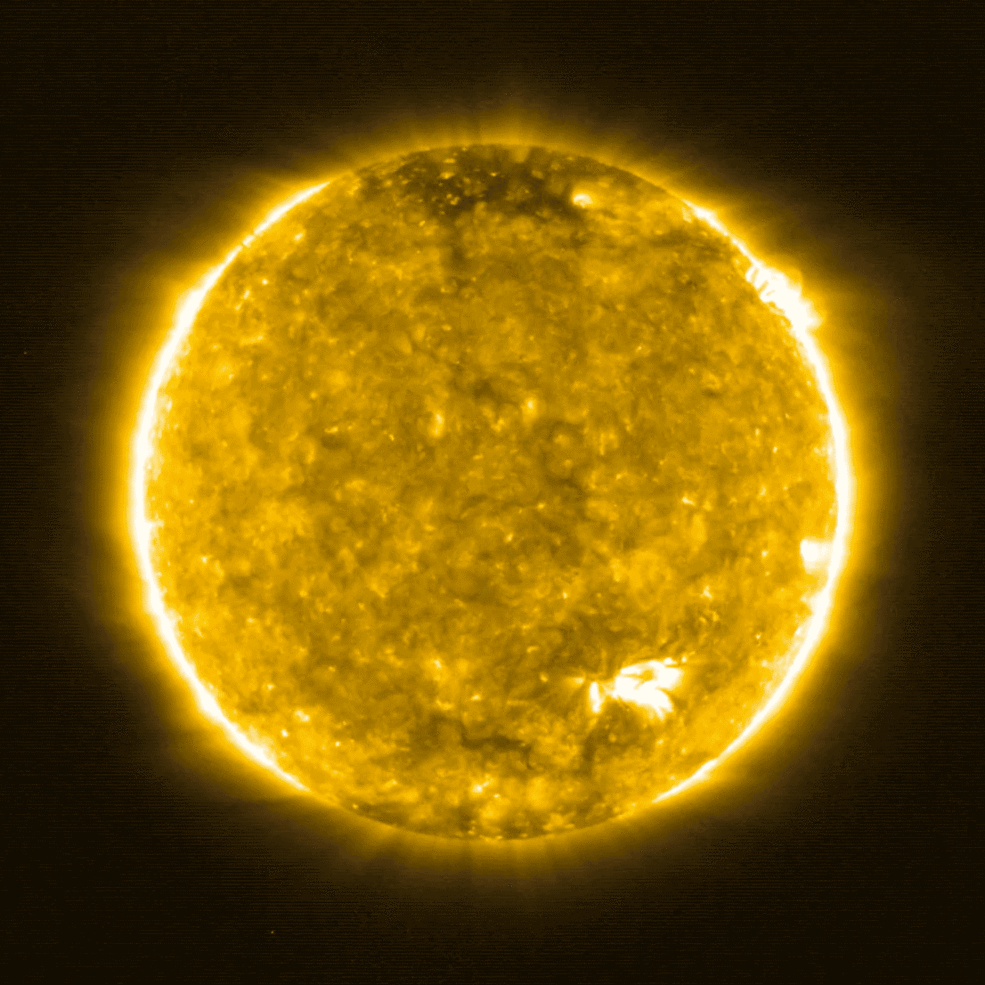This animation shows a series of views of the Sun captured with the Extreme Ultraviolet Imager (EUI) on ESA/NASA's Solar Orbiter on May 30, 2020. They show the Sun’s appearance at a wavelength of 17 nanometers, which is in the extreme ultraviolet region of the electromagnetic spectrum. Images at this wavelength reveal the upper atmosphere of the Sun, the corona, with a temperature of more than a million degrees. Credits: Solar Orbiter/EUI Team (ESA & NASA); CSL, IAS, MPS, PMOD/WRC, ROB, UCL/MSSL
ESA's Solar Orbiter spacecraft has sent back its first images of the sun. At 77 million kilometres from the surface, this is the closest a camera has ever flown to our nearest star. The pictures reveal features on the sun's exterior that have never been seen in detail before.
Launched on 10 February 2020, the spacecraft completed its commissioning phase and first close-approach to the sun in mid-June. Since then, science teams have been processing and examining this early data.
The spacecraft is currently in its cruise phase, on its way to Venus, but will eventually get even closer to the sun.
The Solar Orbiter mission is an international collaboration between ESA and NASA.
Credit: European Space Agency
Provided by European Space Agency
























